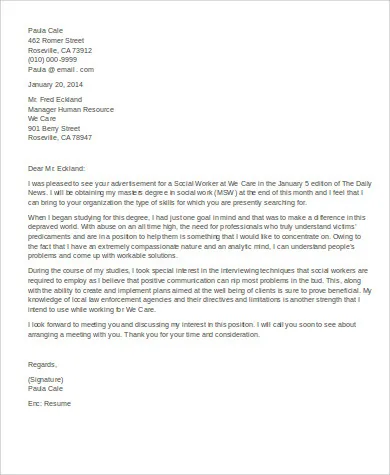Understanding the Human Services Cover Letter
A Human Services cover letter is your first opportunity to make a positive impression on a potential employer. It serves as an introduction, providing context to your resume and showcasing your qualifications, skills, and experience in a way that directly addresses the specific requirements of the job. It’s not just a formality it’s a vital tool in the job application process. Think of it as a marketing document highlighting your unique value proposition to the hiring manager. It demonstrates your understanding of the role, your passion for human services, and your ability to communicate effectively. A well-crafted cover letter can significantly increase your chances of securing an interview.
Key Components of a Human Services Cover Letter
A strong cover letter includes several key components that work together to create a compelling narrative. These elements are crucial for conveying your suitability for the position and highlighting your qualifications. A well-structured cover letter ensures that all necessary information is presented clearly and concisely, capturing the reader’s attention from the outset. It also helps you to demonstrate your professionalism, organizational skills, and attention to detail, all of which are highly valued in the human services field.
Header and Contact Information
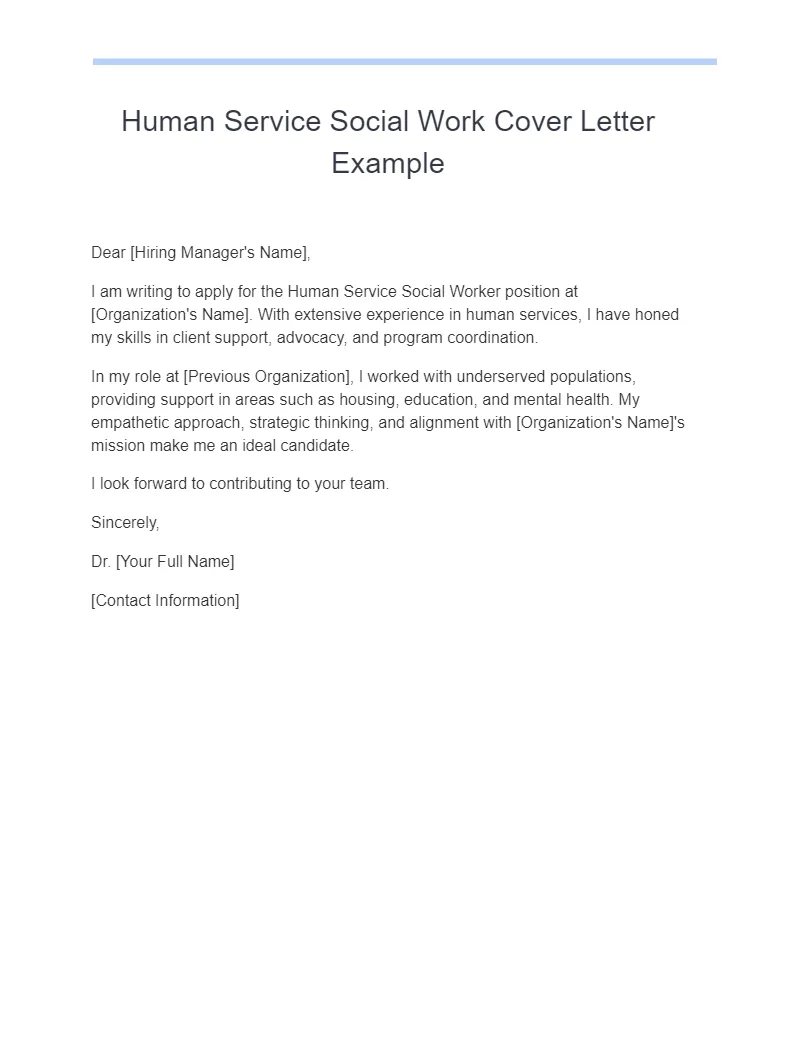
Begin your cover letter with your full name, address, phone number, and email address. This information should be clearly visible at the top of the letter. Following this, include the date and the hiring manager’s name, title, and the organization’s address. This ensures that your application is properly addressed and demonstrates your attention to detail. The header sets the tone for the rest of the letter, presenting a professional and organized appearance. Proper formatting of this section is essential for making a positive first impression, showing that you are prepared and organized.
The Introduction Paragraph
The introduction should immediately capture the reader’s attention. Start by stating the specific position you are applying for and where you found the job posting. Briefly mention why you are interested in the role and the organization. Keep it concise and focused on your enthusiasm and qualifications. This first paragraph sets the tone for the entire letter and is crucial for making a positive initial impression. A strong introduction will encourage the reader to continue reading and learn more about your qualifications. Clearly stating your purpose and highlighting your initial interest sets the stage for a more detailed discussion of your skills and experience.
Body Paragraphs Highlighting Skills
The body of your cover letter is where you showcase your relevant skills and experience. Focus on the skills and experiences most relevant to the job description. Use specific examples to demonstrate how you have applied these skills in the past. These examples should illustrate your abilities and accomplishments. Use keywords from the job description to show how well you match the requirements. Structure each paragraph to discuss a different skill or experience, using the STAR method (Situation, Task, Action, Result) to describe each example clearly. This helps to showcase your qualifications in a practical and relatable manner, making your application more impactful.
Showcasing Relevant Experience
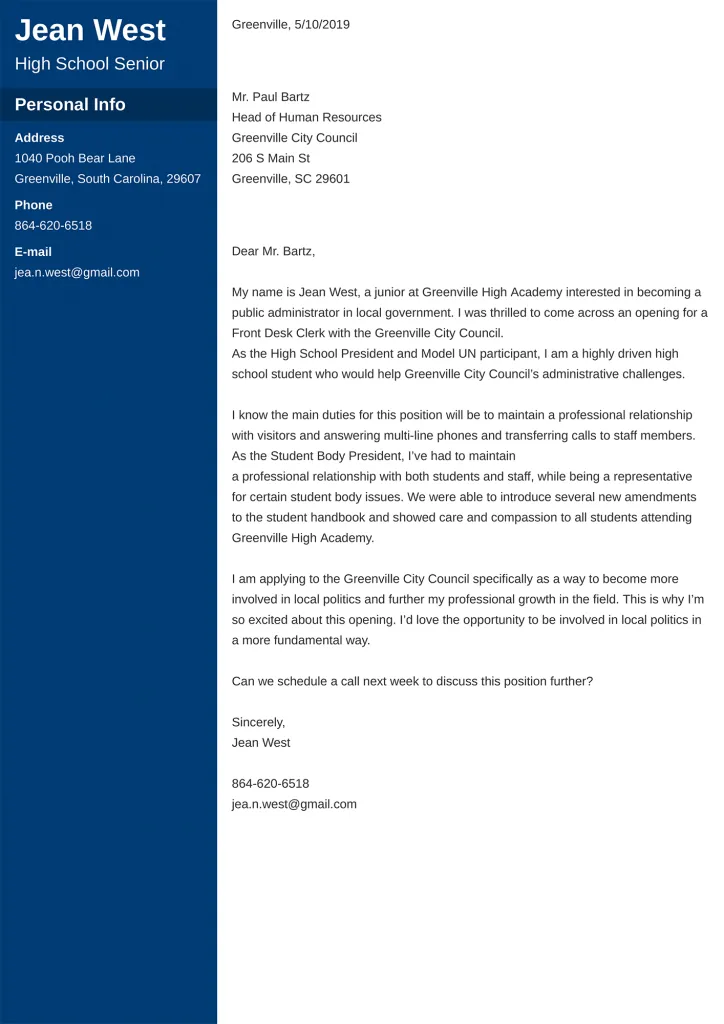
Your cover letter is an opportunity to highlight experiences that directly align with the human services role. Describe your past positions or volunteer experiences, emphasizing the responsibilities and accomplishments most relevant to the target job. For each experience, provide specific examples of how you handled challenges, collaborated with others, or achieved positive outcomes. Tailor your descriptions to match the requirements and keywords found in the job posting. Use action verbs and quantify your achievements wherever possible to make your experience more concrete and impressive. By showcasing your relevant experience, you demonstrate your ability to contribute effectively to the organization.
Quantifying Achievements
Wherever possible, quantify your achievements to demonstrate the impact of your work. Instead of saying “Managed a caseload of clients,” state “Managed a caseload of 40 clients, providing individualized support and resources that led to a 15% increase in client satisfaction.” Using numbers and statistics makes your accomplishments more concrete and compelling. It provides tangible evidence of your skills and abilities, making your cover letter more persuasive. When describing your experience, focus on quantifiable results, such as the number of clients served, the percentage of goals achieved, or the amount of funding secured. This approach helps to highlight the real value you bring to a potential employer.
Tailoring to the Job Description
Always tailor your cover letter to match the specific job description. Carefully review the job posting and identify the key skills, qualifications, and requirements the employer is looking for. Customize your cover letter to address these points directly. Use keywords from the job description throughout your letter, especially in the body paragraphs, to demonstrate how your skills and experience align with the role. Demonstrating that you understand the job’s requirements and are capable of meeting them increases your chances of being selected for an interview. This level of customization shows that you have taken the time to research the position and the organization.
Addressing Specific Requirements
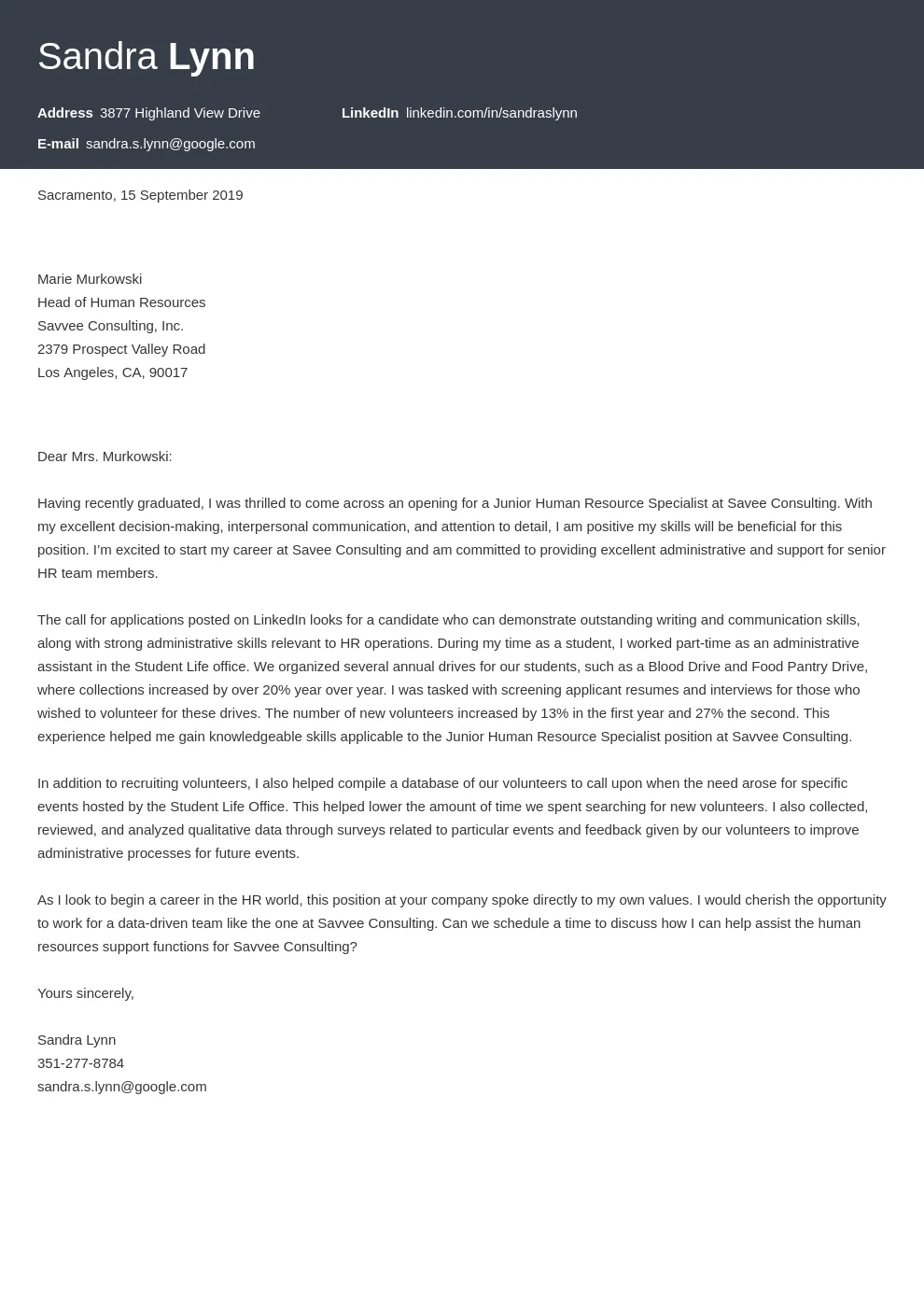
In addition to highlighting relevant skills, address any specific requirements mentioned in the job description. If the posting requires a certain degree, certification, or experience with specific software, clearly state that you meet these requirements. If the job description asks for specific examples or experiences, provide them. For instance, if the job requires experience with crisis intervention, provide an example of your experience in a crisis situation and how you handled it. Addressing the requirements shows that you have carefully read the job description and are a good fit for the position, increasing your chances of success.
The Closing Paragraph
The closing paragraph should summarize your interest in the position and the organization. Reiterate your enthusiasm and highlight your key qualifications once more. Express your availability for an interview and thank the hiring manager for their time and consideration. Keep the tone positive and professional, reiterating your interest and desire to contribute to the organization. This closing paragraph is your last opportunity to leave a strong impression on the hiring manager, so make it count.
Expressing Enthusiasm and Gratitude
End your cover letter with a clear expression of your enthusiasm for the role and your gratitude for the hiring manager’s time. Reiterate your interest in the position, and restate the key reasons why you are a good fit. Express your willingness to discuss your qualifications further and your availability for an interview. Always thank the hiring manager for considering your application. This expression of gratitude shows your appreciation and leaves a positive impression. Ending on a positive note enhances your overall application and shows that you respect their time.
Formatting and Presentation
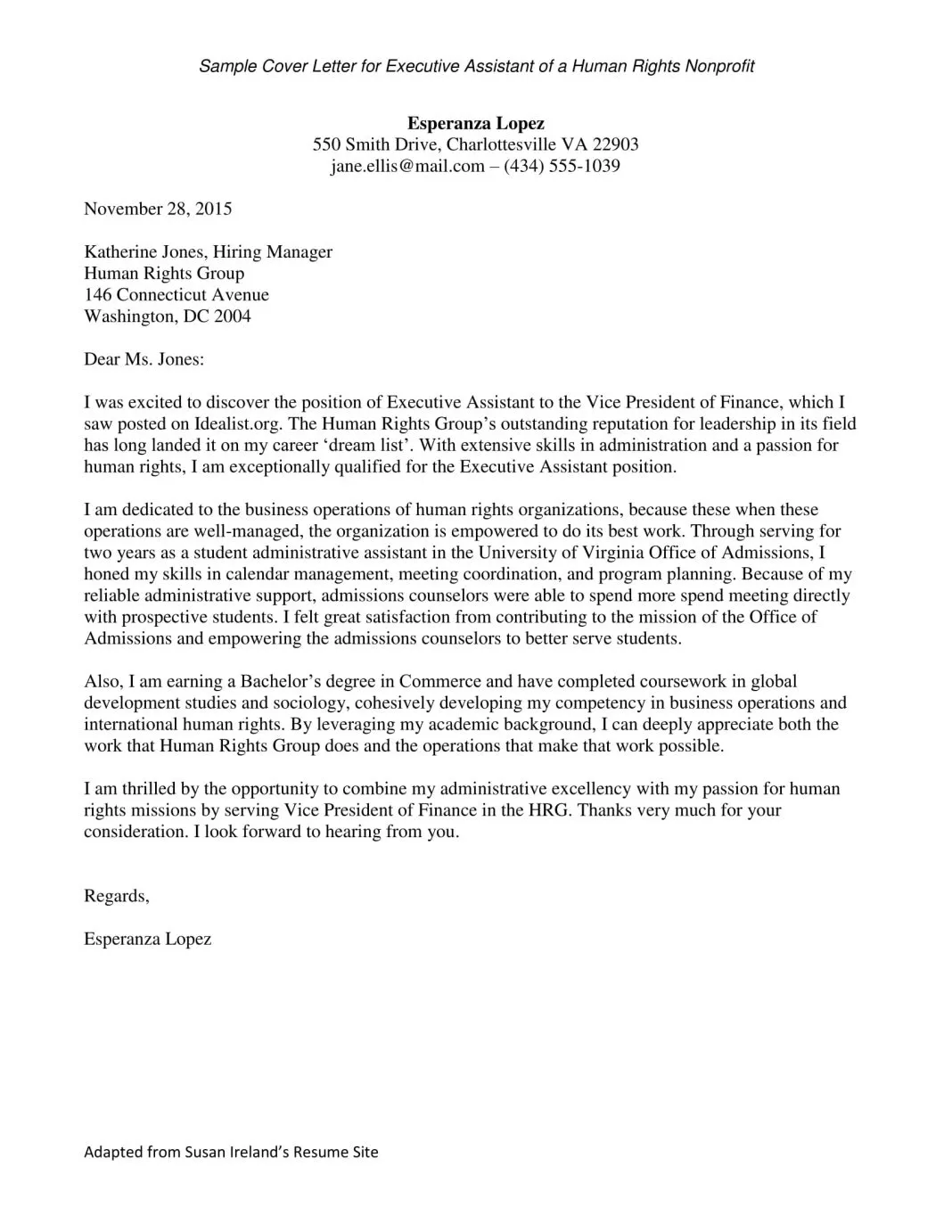
The formatting and presentation of your cover letter are as important as the content. A well-formatted letter is easy to read and leaves a professional impression. Choose a clean, legible font, use appropriate spacing, and ensure the letter is free of typos and grammatical errors. Pay attention to the overall layout, and ensure your letter is visually appealing. A well-formatted letter demonstrates your attention to detail and professionalism. Proper formatting and presentation make your application easier to read, helping to get your message across more effectively.
Choosing the Right Font and Style
Select a professional and easy-to-read font, such as Times New Roman, Arial, or Calibri. Use a font size between 11 and 12 points for readability. Ensure consistent formatting throughout the document, including consistent spacing, alignment, and bullet points. The overall style should be clear, professional, and easy on the eyes. Avoid overly decorative fonts or styles that might distract from the content. Ensure the letter is well-organized with clear sections and headings. Maintain a consistent and professional style to make your cover letter easy to read and visually appealing. This will make a good impression on the hiring manager.
Proofreading and Editing
Thoroughly proofread and edit your cover letter before submitting it. Check for any typos, grammatical errors, or inconsistencies in formatting. Use a spell-checker and grammar-checker, but also read the letter carefully yourself, as these tools can miss certain errors. Have a friend or colleague review your letter to catch any mistakes you might have missed. Proofreading ensures that your cover letter presents a professional and polished image. This is a crucial step, as errors can undermine your credibility and make a negative impression on the hiring manager. Double-check all details, especially the contact information.
Avoiding Common Mistakes
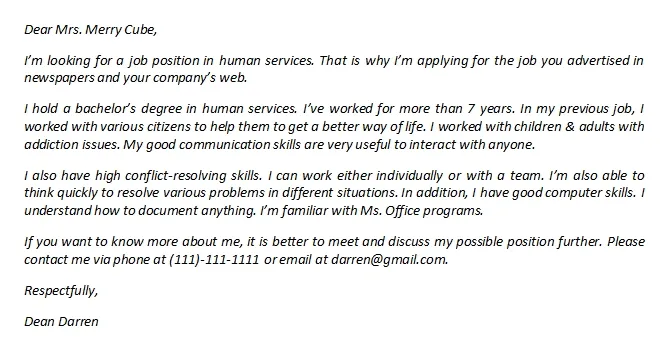
Certain mistakes can seriously damage your application. Avoid these common pitfalls to improve your chances of success. Being aware of and avoiding these errors will ensure your cover letter is as effective as possible. Addressing these points will ensure your cover letter is polished and reflects your professionalism.
Generic Language and Clichés
Avoid using generic language and clichés. Refrain from using phrases such as “I am a team player” or “I have a strong work ethic.” Instead, provide specific examples that demonstrate these qualities. Generic language is often viewed as unoriginal and insincere. Using specific, detailed examples of your skills and experiences will make your cover letter more engaging and memorable. Tailor your letter to the specific job and organization, using language that reflects your understanding of their mission and values. Be unique and show your personality and enthusiasm.
Typos and Grammatical Errors
Typos and grammatical errors can significantly detract from your credibility. Always proofread your cover letter carefully and have someone else review it. Errors indicate a lack of attention to detail, which can negatively impact your application. Double-check all names, dates, and contact information. Ensure that your grammar and spelling are impeccable. The goal is to present a polished, professional document that reflects your care and attention to detail. Make sure your writing is clear and concise, and conveys your professionalism.
Failing to Research the Organization
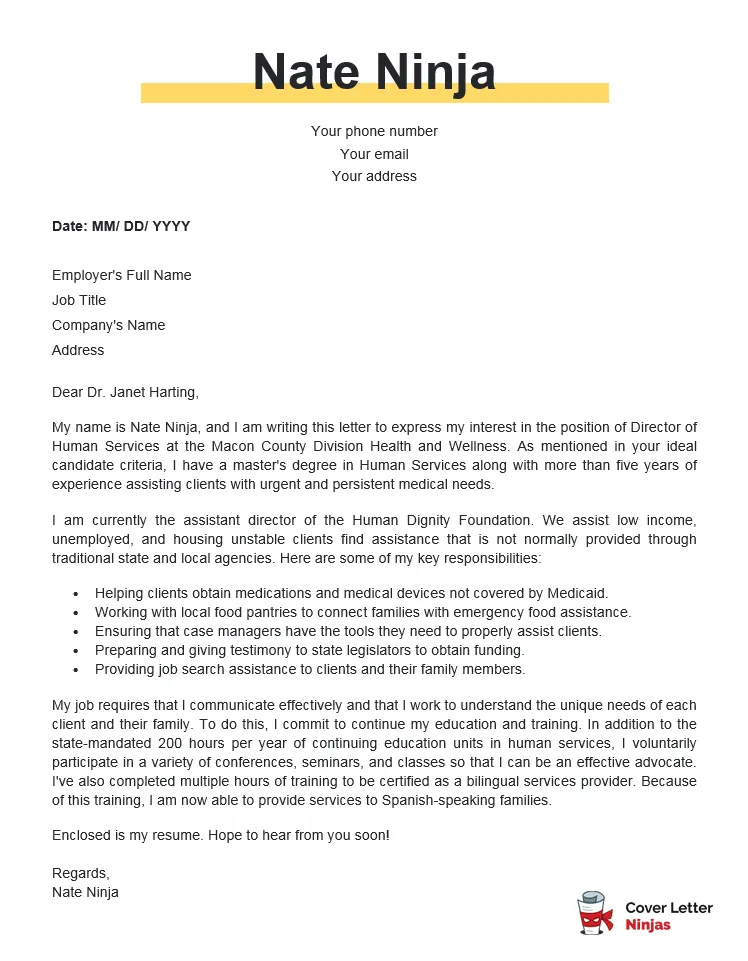
Failing to research the organization is a common mistake. Before submitting your cover letter, research the organization’s mission, values, and recent activities. Tailor your letter to show that you understand the organization and its needs. Addressing the specific mission of the organization can set your cover letter apart. This shows that you are genuinely interested in working there. Demonstrating that you understand the organization and can align with its goals makes a positive impression.
Human Services Cover Letter Examples
Reviewing cover letter examples can provide valuable insights into effective writing techniques and formatting. Look for examples that align with the specific type of human services role you are seeking. Analyze the examples for structure, language, and content. Customize the examples to fit your unique skills and experience. Adapt and learn from the examples that resonate with you. Use these as a foundation to write a compelling cover letter.
